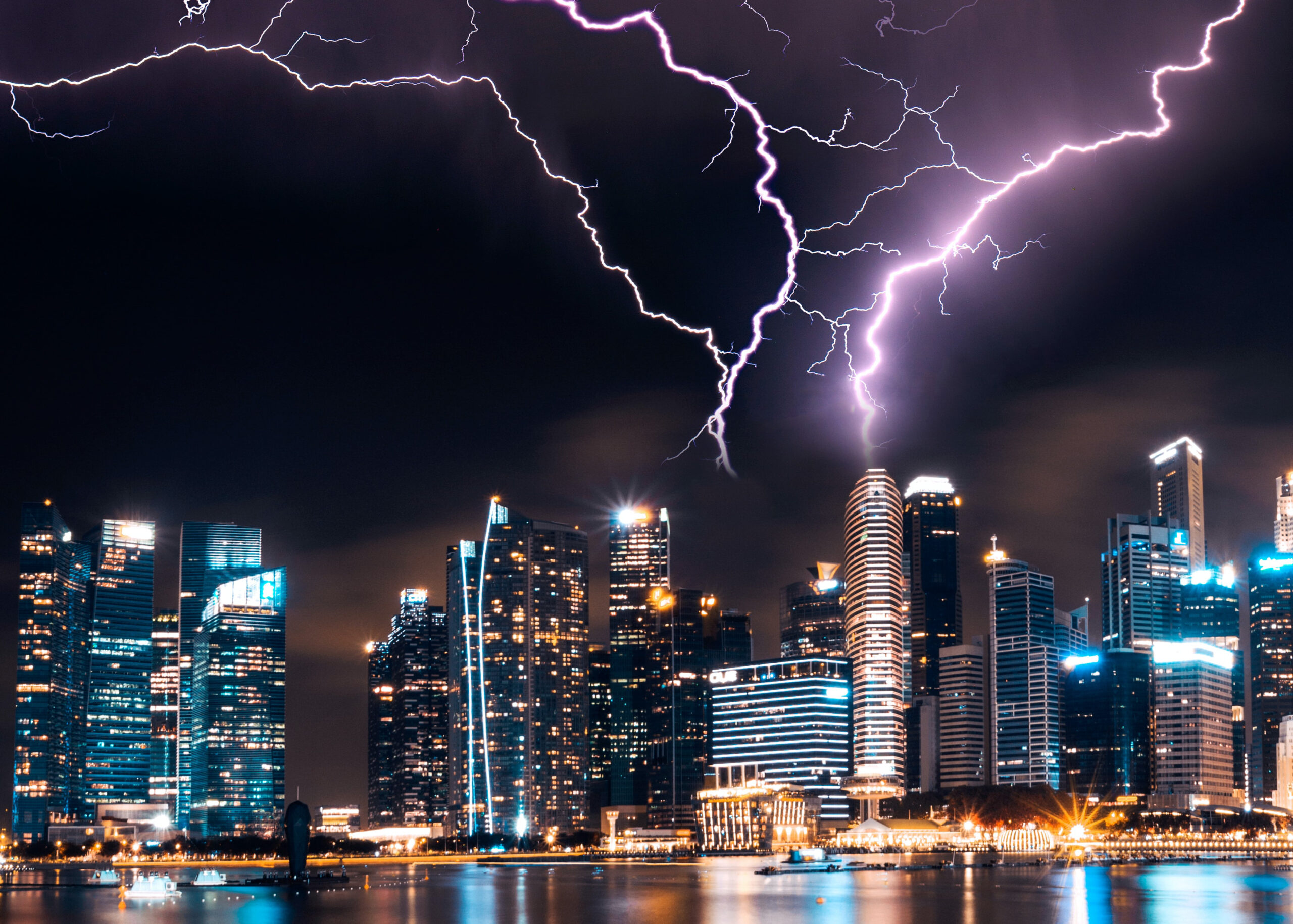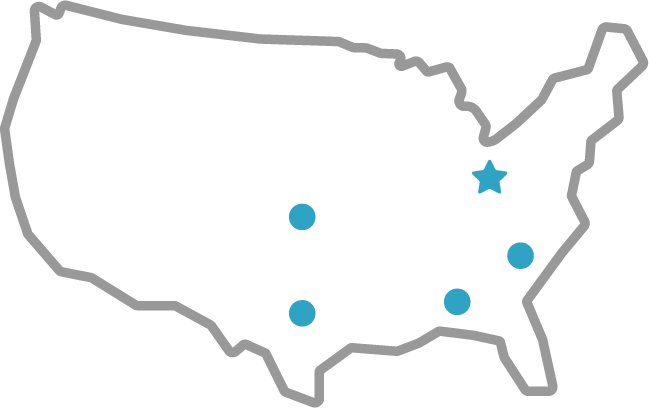Extreme Weather and the Electric Grid“Climate change is a controversial subject, right? People will debate whether there is climate change... that's a whole political debate that I don't want to get into. I want to talk about the frequency of extreme weather situations, which is not political.” -Andrew Cuomo

Today’s Forecast : Cloudy With a Chance of Power Outages
Earlier this month the JCL Energy Journal took a look at the US Electric Grid. As we learned about how the grid was structured, we also learned another not-so-fun fact. Extreme weather is affecting the electric grid in increasingly detrimental ways each year. Lately, it seems like there is always some sort of power crisis happening in the US. We are in the middle of yet another hotter than normal summer, and the rolling blackouts and power outages continue to happen, especially in the western part of the country.
But just what is going on here? How could a couple of degrees in temperature, or something as typical as a rainstorm, have such a detrimental effect on our power system? As it turns out, the combination of increasingly extreme weather and an aging grid system is the “perfect storm” for power problems.
It’s Getting Hot in Here
According to data from the National Oceanic and Atmospheric Administration, “The average [U.S.] summer temperature in the past five years has been 1.7 degrees (0.94 Celsius) warmer than it was from 1971 through 2000”. And the temperature spike is worse on the west coast. Some areas have seen as much as a 2.7 degree increase from previous years. Not only is the weather hotter, but the hot weather is lasting longer each year. A Climate Central study showed that, “in more than half of cities analyzed, high-heat days arrived at least a week earlier, on average, than 50 years ago. Three-fourths of places had more “extremely hot” days”.
It may not seem like much, but these temperature spikes and longer summers make a huge difference for our power grid. Think about your summer routine. As temperatures soar, you probably do what most people do… you turn on the AC. Electricity demand surges as the temperature increases. As the demand surges higher, it overwhelms the power grid, which can cause power failure. These blackouts can be dangerous, even fatal.
High Heat = Low Efficiency
Unfortunately, the increased demand for power isn’t the only problem that the heat can cause for the grid. Power plants often rely on water cooling systems to keep things running smoothly. Nearby sources like a rivers or lakes provide the water, but the water must be re-cooled before it goes back into that source. The more power the plant produces, the more energy and time it takes to cool the water used back down.
The physical aspect of the grid is also susceptible to higher temperatures. Aluminum covers many power transmission cables that transport power. Aluminum expands in heat. When the aluminum expands, power lines can sag and become less efficient. Even the transformers in the system are affected. Transformers give off heat as they operate. All transformers have a power rating, which is the highest temperature at which they can safely function. When the weather gets hotter, it means the transformers run hotter. This can affect their overall efficiency. If the trend of hotter, longer summers continues, the most likely answer to these issues will be an overhaul of the grid system itself.
Winter Is Coming
Summer doesn’t last forever, and the grid gets a reprieve for a few months once the weather cools down. Unfortunately, another extreme weather condition soons arrives in the form of winter temperatures. Obviously, the same issues with increased power demand arise as the temperatures drop. Colder weather means the heat goes on. As temperatures drop, power demand increases. As we saw in Texas in 2021, extremely cold temperatures can drive the need for power beyond what the grid is capable of producing, and can bring everything to a halt.
Winter weather also affects the physical grid system. Frozen power lines, heavy snowfall, and falling trees are all common causes of power outages. Transformers can be affected as well. In extremely cold temperatures, older transformers will be less efficient. According to National Geographic, “as they age—and much of our infrastructure is already operating well beyond the lifespan for which it was designed—they may not operate well in extreme conditions”. Clearly, the US electric grid is long overdue for some much needed improvements.
It’s Raining Cats & Dogs… and Outages!
Extreme temperatures are one thing, but how can something like rain affect our electricity? We live in the 21st century. Surely our technology should be able to withstand a little stormy weather! In reality, the grid was actually designed to cut power when storms damage the lines. In high-wind situations, it isn’t uncommon for a tree or other object to fall across power lines. When something falls on the lines, the power automatically cuts off to conserve energy. The power comes back on after the object is removed. In areas with a lot of trees, clearing branches and removing dead trees close to lines is a critical part of the maintenance process.
Extreme weather and storms can also affect the electric grid system in other ways. Heavy rains over long periods of time can damage transformer bushings and switches, and can cause blown fuses. Hail can crack and damage equipment. Strong winds can topple poles. Lightning strikes, seeking elevated metallic objects, cause power surges that overwhelm the transformers nearby.
So why not just bury the lines? Clearly, it would better protect them from both extreme temperatures and from extreme weather. Well, there’s a catch… flooding can easily damage underground lines. With an above ground system it is very easy to see damage to lines and poles. When the lines are buried it is far more challenging to quickly identify the problem. It can also be more disruptive to the local community when repairs are happening, depending on how much digging is required. Cost is yet another issue. It would cost billions of dollars to overhaul the US electric grid to incorporate more underground lines. And as we know, money often is the deciding factor in decision making.
Tomorrow’s Forecast for the Electric Grid
With temperatures shifting and extreme weather events getting more frequent, the electric grid will continue to face problems. Our need for power is continually increasing as well. Power outages today have a far bigger impact on our daily lives than they did 50 years ago. But the cost of an overhaul to the system is daunting. We need a redesign, but it may not happen anytime soon due to the roadblock of American politics. For the foreseeable future, maintaining and repairing the current grid system will probably remain the norm. Luckily, the team at JCL Energy is always standing at the ready to provide service and repair to keep you powered up, even when the weather has other plans.
Sources
Graham, Ben. “What Hot Weather Means for Electricity – Drax Global.” Drax Global, 29 Aug. 2017, https://www.drax.com/power-generation/hot-weather-means-electricity/.
Handayani, Kamia. “How Climate-Related Weather Conditions Disrupt Power Plants and Affect People.” Phys.Org, Phys.org, 22 Jan. 2020, https://phys.org/news/2020-01-climate-related-weather-conditions-disrupt-power.html.
Staughton, John. “Why Does The Power Go Out During Storms And Bad Weather Conditions?” Science ABC, Science-ABC, 31 Jan. 2020, https://www.scienceabc.com/eyeopeners/why-does-the-power-go-out-during-storms-and-severe-weather.html.
“Why Does the Power Go Out When It’s Cold?” National Geographic, National Geographic, 23 Jan. 2014, https://www.nationalgeographic.com/environment/article/why-does-the-power-go-out-when-its-cold.


